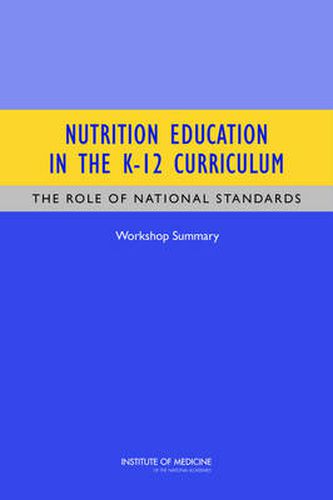Readings Newsletter
Become a Readings Member to make your shopping experience even easier.
Sign in or sign up for free!
You’re not far away from qualifying for FREE standard shipping within Australia
You’ve qualified for FREE standard shipping within Australia
The cart is loading…






The childhood obesity epidemic and related health consequences are urgent public health problems. Approximately one-third of America’s young people are overweight or obese. Health problems once seen overwhelmingly in adults, such as type 2 diabetes, cardiovascular disease, and hypertension, are increasingly appearing in youth. Though the health of Americans has improved in many broad areas for decades, increases in obesity could erode these and future improvements. The IOM report Accelerating Progress in Obesity Prevention: Solving the Weight of the Nation recognized the importance of the school environment in addressing the epidemic and recommended making schools a focal point for obesity prevention. The development and implementation of K-12 nutrition benchmarks, guides, or standards (for a discussion of these terms, see the next section of this chapter) would constitute a critical step in achieving this recommendation. National nutrition education curriculum standards could have a variety of benefits, including the following:
Improving the consistency and effectiveness of nutrition education in schools; Preparing and training teachers and other education staff to help them provide effective nutrition education; Assisting colleges and universities in the development of courses in nutrition as part of teacher certification and in updating methods courses on how to integrate nutrition education in subject-matter areas in the classroom and in materials; and Establishing a framework for future collaborative efforts and partnerships to improve nutrition education.
Nutrition Education in the K-12 Curriculum: The Role of National Standards is a summary of the workshop’s presentations and discussions prepared from the workshop transcript and slides. This summary presents recommendations made by individual speakers.
$9.00 standard shipping within Australia
FREE standard shipping within Australia for orders over $100.00
Express & International shipping calculated at checkout
The childhood obesity epidemic and related health consequences are urgent public health problems. Approximately one-third of America’s young people are overweight or obese. Health problems once seen overwhelmingly in adults, such as type 2 diabetes, cardiovascular disease, and hypertension, are increasingly appearing in youth. Though the health of Americans has improved in many broad areas for decades, increases in obesity could erode these and future improvements. The IOM report Accelerating Progress in Obesity Prevention: Solving the Weight of the Nation recognized the importance of the school environment in addressing the epidemic and recommended making schools a focal point for obesity prevention. The development and implementation of K-12 nutrition benchmarks, guides, or standards (for a discussion of these terms, see the next section of this chapter) would constitute a critical step in achieving this recommendation. National nutrition education curriculum standards could have a variety of benefits, including the following:
Improving the consistency and effectiveness of nutrition education in schools; Preparing and training teachers and other education staff to help them provide effective nutrition education; Assisting colleges and universities in the development of courses in nutrition as part of teacher certification and in updating methods courses on how to integrate nutrition education in subject-matter areas in the classroom and in materials; and Establishing a framework for future collaborative efforts and partnerships to improve nutrition education.
Nutrition Education in the K-12 Curriculum: The Role of National Standards is a summary of the workshop’s presentations and discussions prepared from the workshop transcript and slides. This summary presents recommendations made by individual speakers.